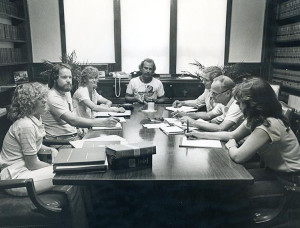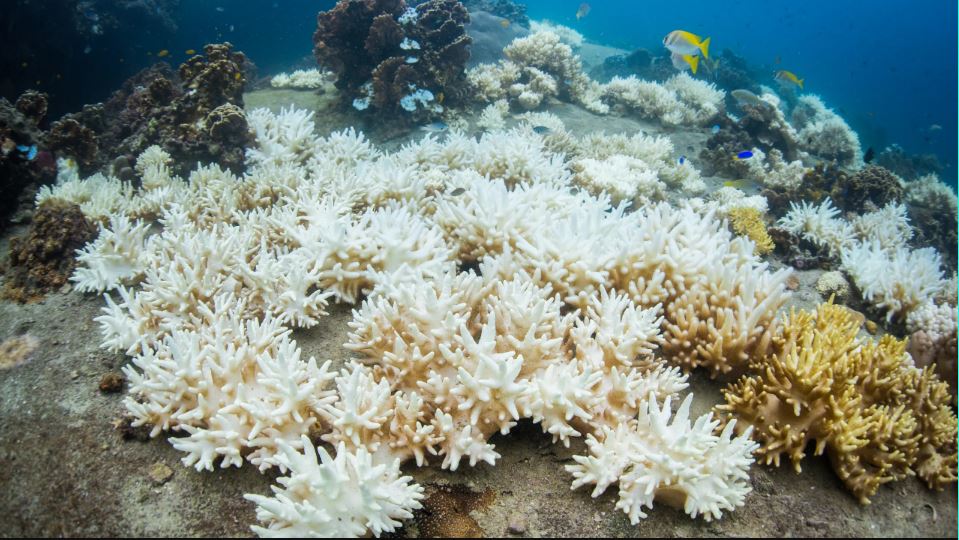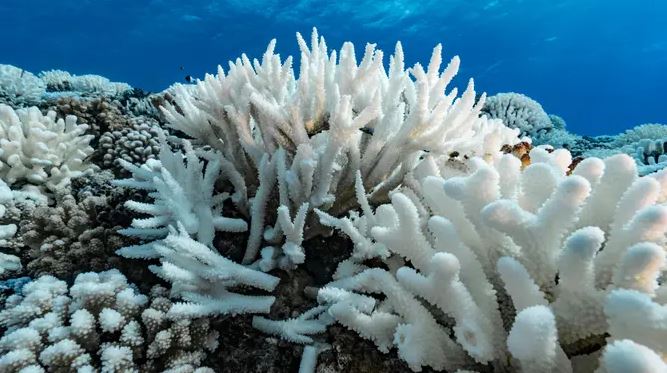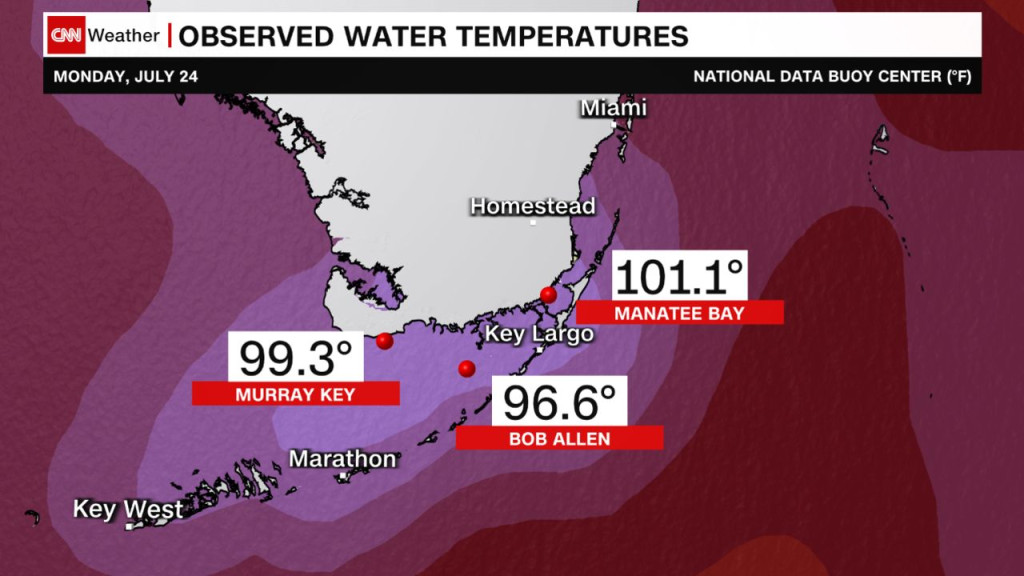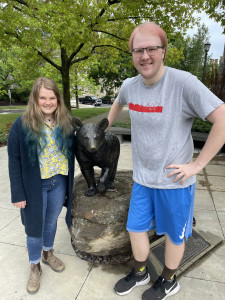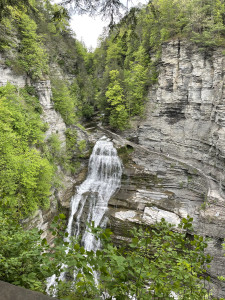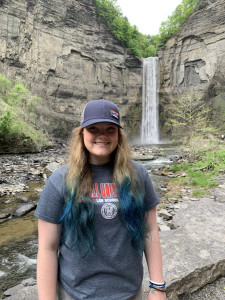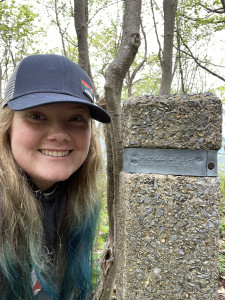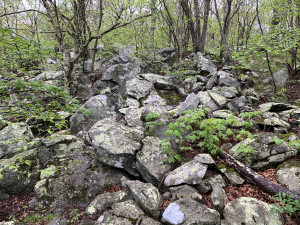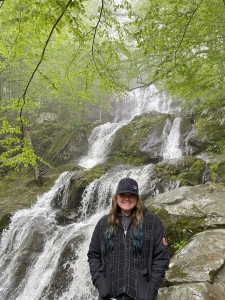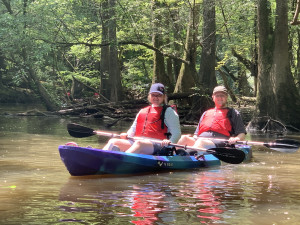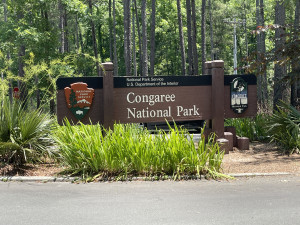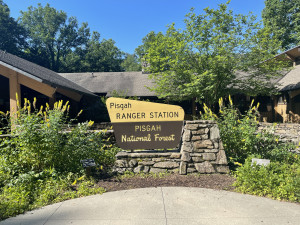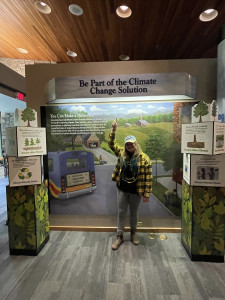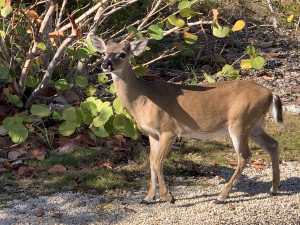Delaney Talks to Statues
Delaney talks to statues as she dances ’round the pool
She chases cats through Roman ruins and stomps on big toadstools
She speaks a language all her own that I cannot discover
But she knows I love her so when I tuck her ‘neath the covers
Father, daughter, down by the water
Shells sink, dreams float, life’s good on our boat
Jimmy Buffett
Delaney Talks To Statues, album Fruitcakes (1994)
Life sure is short.
When you are young, I suppose it can feel like we will live forever and that we have a seemingly unlimited amount of time to lead an impactful life, but the sad truth is we don’t really have much time here on this green and blue ball after all. The sooner you start your life’s work, the sooner you start trying to make a positive difference, the better because there is a lot to be done and truly so little time.
I turned 24 last week and in just a couple of days my baby brother Owen will turn 22. Both of us are committed to living impactful lives, to trying to be agents of change, but I have to admit that at our age it’s at times easy to feel a sense of longevity. To think we have an unlimited amount of time. That is until reality raises its head, such as the case with this weekend’s news of the passing of one of my true heroes: singer, song writer, adventurer, and environmentalist extraordinaire, Jimmy Buffett.
If you grew up in South Florida in recent decades like I have you know Jimmy to be an iconic presence that helped portray, and in many ways created, an American Caribbean lifestyle countless of people adore. And nowhere around these parts is that truer than here in the lower Florida Keys where I’ve spent so much of my life. Jimmy’s influence is literally everywhere here and we are better because of it. His untimely passing this weekend has me thinking a lot about my own relationship with Jimmy beyond just the places all around me that drift in and out of his songs and stories and the great times they always evoke.
I grew up in a home where my mother and father simply adored Jimmy, met him many times and had countless “Jimmy Buffett stories” to happily share. His music was on the radio in our homes, ever present on the boat, and, yes, he was “with” us as we traveled to one western National Park after another all summer this year through his Radio Margaritaville on the car’s satellite radio.
It’s fair to say that Jimmy Buffett’s music is the soundtrack of their lives and, thus, it became a large part of my own. When I was just learning to speak I’d yell out what I thought was his name, “Barry Muffet!,” whenever I heard his music as I jumped up and down and ran around the house like a crazy person dancing and singing. And the bedtime lullabies my father would sing to me when he put me to bed, Delaney Talks to Statues and Little Miss Magic, were often laced with Jimmy Buffett and still ring deep in my memories. Heck, for the longest time I even wondered if I’d been named after Jimmy’s own daughter, (Sarah) Delaney.
As I grew older I had the distinct honor of meeting Jimmy and was struck by how down to earth, genuine and engaging he was to me, a total stranger. And I was also fortunate to see him in concert many times and ways including at stadium shows like the night he opened for his good friends The Eagles at Hard Rock stadium in front of what had to be 50,000 people, as well as an intimate gathering of a hundred or so folks at a museum fundraiser with Gloria Estefan of Miami Sound Machine fame (talk about South Florida music royalty!).
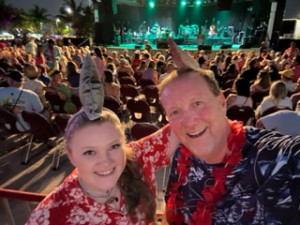 |
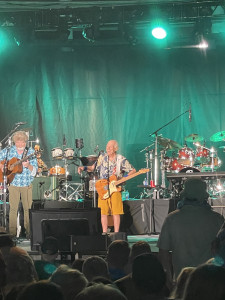 |
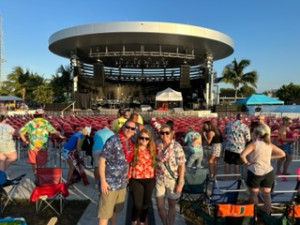 |
I am especially thankful to have been there at his very last Key West show this past February. I’ve rarely seen my father and mother more excited to see any live show than they were in the days before that concert, yet a bit ominous as Dad wondered aloud if this might be the last time that we ever saw him in concert. Sadly, it was just that, but Jimmy was at the absolute height of his powers playing the guitar, singing, and sharing story after story about those songs and his life in Key West. It was an intimate outdoor show at the Coffee Butler Auditorium, a place where I’d acted as the emcee for a Hurricane Irma Relief Fundraiser a few years ago when it first opened, on what was a perfect late winter night’s party with a thankful, colorful crowd of fellow Parrot Heads knowing we were witnessing something special. It’s a night that I will never forget.
Even if you never saw him perform in person, there are countless places all over the Keys that he sings and writes about and in some way or another they have long been part of my life. Captain Tony’s. Caroline Street. AIA. The LaTeDa. Blue Heaven.
Heck, as soon as I clear the channel in my boat here on No Name Key I only need look to the east to see the Seven Mile Bridge, the place where Jimmy finished writing his legendary song Margaritaville while stuck there in traffic for two hours one day. And, yes, I think of Jimmy every single time I see a gentle manatee drift by in the waters off the shores of No Name Key. He is everywhere here in our lives in the Keys.
“It’s pretty simple, we live in paradise, and paradise is in peril. We need to have a little more attention about the place where we grew up, and where our children should grow up. It’s not that hard, it really isn’t.”
Jimmy Buffett
During a 2018 Concert in Support of Democrat Gwen Graham
Jimmy is one of my heroes, not only because he was a world class entertainer and highly successful businessperson, but because of his deep love and support of the environment, especially our oceans. Long before I was born, he served as Chairman of the Save the Manatee Committee NGO at the request of former Florida Governor Bob Graham, worked to save the Key West Salt Ponds, and led many other environmental causes. His environmental work is, to me, what made him a truly special person and an inspiration.
Over the years he appeared in front of Congress to support renewing the Endangered Species Act, supported countless NGO’s such as Reef Relief and never ever seemed to shy away from helping others in need whether after Hurricane Irma here in the Keys, Hurricane Katrina in New Orleans, or the entire Gulf Coast region following the horrific BP oil spill.
And, yep, there he was leading the way at his very last ever Florida show, in Hollywood, Florida this past February, when his final words that night were “stand with Parkland” as a message against the gun violence ravaging our country. Earlier that night he put it, as always, perfectly and simply by saying “it’s not about politics, it’s about humanity.” Jimmy Buffett put, as they say, his money where his mouth was and did so for more causes than can be counted and should always be remembered for his passion to help others and our environment.
I’d Rather Die While I’m Living.
Than Live While I’m Dead.
Jimmy Buffett
Growing Older But Not Up, album Coconut Telegraph (1981)
Singer.
Songwriter.
Sailor.
Father.
Author.
Pilot.
Angler.
Environmentalist.
Husband.
Actor.
Businessman.
Poet.
Activist.
Jimmy Buffett was a living, breathing blueprint of how to live one’s life to the fullest and how to have a positive, multifaceted impact along the way. He was an American institution and inspiration.
While I hope he’s now off performing a perpetual “Labor Day Weekend Show” like he sung about so many years ago, I am trying to make sense of my grief over his passing by thinking about how his life illustrates what we can accomplish during our short time here on earth. It’s an ironic lesson coming from the guy who helped issue the “License to Chill” but his impact is indisputable, and I sure am grateful to have crossed his path and to have my heart filled with his music. More grateful than he could ever possibly know.
Bubbles Up,
They will point you to home,
No matter how deep or far we roam.
Jimmy Buffett
Bubbles Up, album Equal Strain on All Parts (upcoming 2023)
“Bubbles Up” Jimmy and tight lines. May you sail on with the wind at your back forever more. Bravo for a life well lived and loved.



